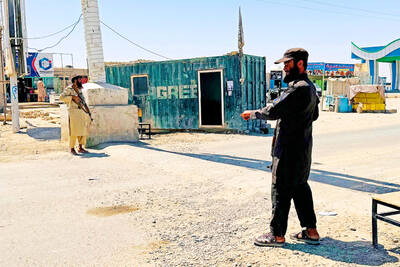Iran has significantly expanded uranium enrichment with almost 5,000 centrifuges now operating and this has made it harder for UN inspectors to keep track of the disputed nuclear activity, an International Atomic Energy Agency (IAEA) report said on Friday.
The restricted IAEA report said Iran had increased its rate of production of low-enriched uranium (LEU), boosting its stockpile by 500kg to 1,339kg in the past six months.
Iran’s improved efficiency in turning out potential nuclear fuel is sure to fan Western fears of the Islamic Republic nearing the ability to make atomic bombs, if it chose to do so.
Oil giant Iran says it wants a uranium enrichment industry solely to provide an alternative source of electricity.
But it has stonewalled an IAEA investigation into suspected past research into bomb-making, calling US intelligence about it forged, and continues to limit the scope of IAEA inspections.
David Albright of Institute for Science and International Security, a Washington think tank that tracks proliferation issues, said Iran now had accumulated enough LEU to convert into high-enriched uranium (HEU) sufficient for one atom bomb.
This would require reconfiguring Iran’s centrifuge network and miniaturizing HEU to fit into a warhead — technical hurdles that could take one or two years or more. “Weaponizing” enrichment would not escape IAEA notice unless done at a secret location.
“[But] Iran could accomplish nuclear weapons ‘breakout capability’ within 3-6 months at Natanz or a clandestine ... facility,” Albright said in an e-mail commentary on the report, citing a 20 percent rise in its daily LEU production rate.
The UN nuclear watchdog report said Iran had 4,920 centrifuges, cylinders that spin at supersonic speed, being fed with uranium hexafluoride gas for enrichment nonstop as of May 31, a jump of about 25 percent since February.
Another 2,132 machines were installed and undergoing vacuum tests while a further 169 were being set up — bringing Iran’s total number of deployed centrifuges at its underground Natanz enrichment hall to 7,231 — with 55,000 eventually planned.

‘EYE FOR AN EYE’: Two of the men were shot by a male relative of the victims, whose families turned down the opportunity to offer them amnesty, the Supreme Court said Four men were yesterday publicly executed in Afghanistan, the Supreme Court said, the highest number of executions to be carried out in one day since the Taliban’s return to power. The executions in three separate provinces brought to 10 the number of men publicly put to death since 2021, according to an Agence France-Presse tally. Public executions were common during the Taliban’s first rule from 1996 to 2001, with most of them carried out publicly in sports stadiums. Two men were shot around six or seven times by a male relative of the victims in front of spectators in Qala-i-Naw, the center

Incumbent Ecuadoran President Daniel Noboa on Sunday claimed a runaway victory in the nation’s presidential election, after voters endorsed the young leader’s “iron fist” approach to rampant cartel violence. With more than 90 percent of the votes counted, the National Election Council said Noboa had an unassailable 12-point lead over his leftist rival Luisa Gonzalez. Official results showed Noboa with 56 percent of the vote, against Gonzalez’s 44 percent — a far bigger winning margin than expected after a virtual tie in the first round. Speaking to jubilant supporters in his hometown of Olon, the 37-year-old president claimed a “historic victory.” “A huge hug

Canadian Prime Minister Mark Carney is leaning into his banking background as his country fights a trade war with the US, but his financial ties have also made him a target for conspiracy theories. Incorporating tropes familiar to followers of the far-right QAnon movement, conspiratorial social media posts about the Liberal leader have surged ahead of the country’s April 28 election. Posts range from false claims he recited a “satanic chant” at a campaign event to artificial intelligence (AI)-generated images of him in a pool with convicted sex offender Jeffrey Epstein. “He’s the ideal person to be targeted here, for sure, due to

DISPUTE: Beijing seeks global support against Trump’s tariffs, but many governments remain hesitant to align, including India, ASEAN countries and Australia China is reaching out to other nations as the US layers on more tariffs, in what appears to be an attempt by Beijing to form a united front to compel Washington to retreat. Days into the effort, it is meeting only partial success from countries unwilling to ally with the main target of US President Donald Trump’s trade war. Facing the cratering of global markets, Trump on Wednesday backed off his tariffs on most nations for 90 days, saying countries were lining up to negotiate more favorable conditions. China has refused to seek talks, saying the US was insincere and that it